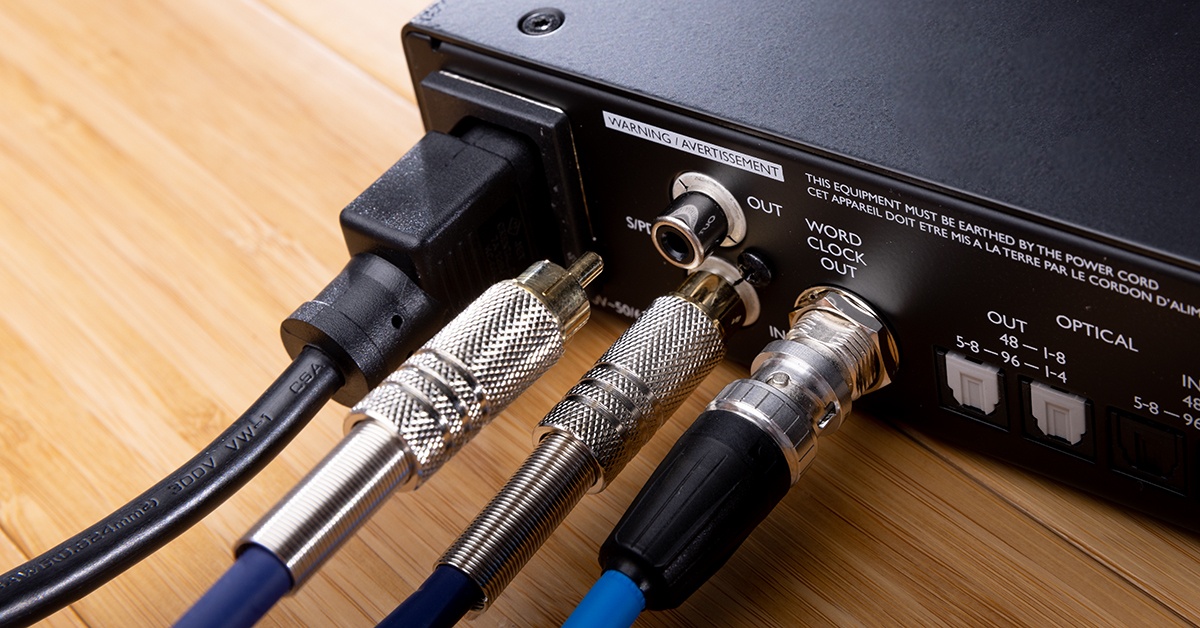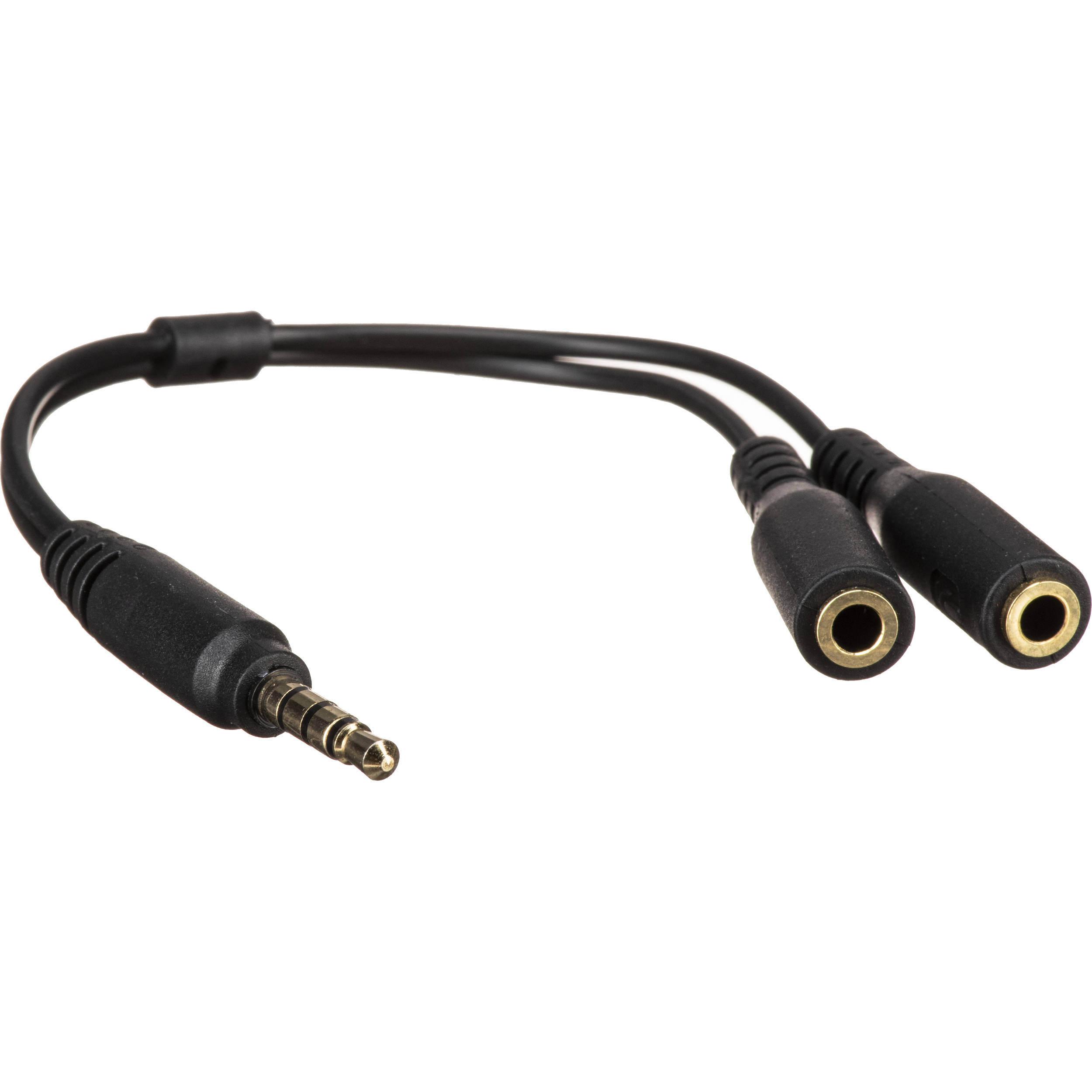Home>Production & Technology>Audio Cable>How To Micspam In Csgo Virtual Audio Cable


Audio Cable
How To Micspam In Csgo Virtual Audio Cable
Modified: January 22, 2024
Learn how to micspam in CSGO using Virtual Audio Cable. Discover the best techniques and settings for audio cable manipulation in this comprehensive guide.
(Many of the links in this article redirect to a specific reviewed product. Your purchase of these products through affiliate links helps to generate commission for AudioLover.com, at no extra cost. Learn more)
Table of Contents
Introduction
When it comes to online gaming, communication is key. Whether you’re coordinating with teammates or engaging in playful banter, having clear and crisp audio can greatly enhance your gaming experience. One way to add a unique twist to your gaming communication is through micspam.
Micspam, short for microphone spamming, refers to the act of playing audio clips or music through your microphone while gaming. It can be a fun way to entertain your friends, express your personality, or add a comedic element to your gameplay. In games like CS:GO (Counter-Strike: Global Offensive), micspam has become a popular pastime for players looking to inject some creativity into their gaming sessions.
To accomplish micspam in CS:GO, you’ll need a tool that allows you to route audio in a flexible and customizable way. This is where Virtual Audio Cable comes into play.
Virtual Audio Cable is a software application that acts as a virtual audio device. It allows you to create virtual audio channels and connect them to other applications or devices. With Virtual Audio Cable, you can route audio from one application, such as a media player, to another, such as your CS:GO microphone input, enabling you to play audio clips or music through your microphone during gameplay.
In this article, we’ll guide you through the process of setting up Virtual Audio Cable and configuring CS:GO for micspam. We’ll also provide tips for choosing and preparing micspam materials, as well as troubleshooting common issues that may arise along the way.
So, if you’re ready to bring some audio creativity to your CS:GO gaming sessions, let’s dive in and explore the exciting world of micspam with Virtual Audio Cable!
What is micspam?
Micspam, also known as microphone spamming, is the practice of playing audio through your microphone during online gaming sessions. Instead of using your microphone solely for communication with other players, micspam allows you to inject audio clips, music, or sound effects into your gameplay.
Micspamming can be a fun and creative way to personalize your gaming experience and interact with other players in a unique way. It can add humor, entertainment, or even strategic elements to your gameplay. With the right audio clips or music, you can create memorable moments and enhance the overall atmosphere of your gaming session.
However, it is important to note that micspamming should be done responsibly and with respect for others. In multiplayer games, such as CS:GO, where communication is crucial for team coordination, it’s important to be mindful of your teammates’ ability to hear important in-game calls and instructions. Micspamming should not disrupt gameplay or negatively impact the gaming experience for others.
It’s also worth mentioning that micspamming is typically more suitable for casual and social gaming environments, where players are open to lighthearted interactions. In competitive gaming settings, micspamming is generally discouraged or even prohibited, as it can create distractions and hinder the focus necessary for competitive play.
Overall, micspamming is a fun and creative way to add a personal touch to your gaming experience. With Virtual Audio Cable, you can easily incorporate micspamming into your gameplay, allowing your personality to shine through and creating memorable moments with your fellow players.
What is Virtual Audio Cable?
Virtual Audio Cable is a software application that acts as a virtual audio device, allowing you to create virtual audio channels and route audio between different applications or devices on your computer. Think of it as a bridge that enables audio communication between various software and hardware components.
With Virtual Audio Cable, you can create multiple virtual audio cables, each with its own set of inputs and outputs. These virtual cables act as intermediaries, capturing audio from one application or device and sending it to another. This allows for flexible and customizable audio routing, making it a powerful tool for applications like micspamming.
One of the primary uses of Virtual Audio Cable is to direct audio output from one application to another as input. For example, you can use it to redirect the audio output of a media player to your CS:GO microphone input, effectively allowing you to play audio clips or music through your microphone during gameplay.
Virtual Audio Cable provides a user-friendly interface for managing the virtual cables and configuring the audio routing settings. You can set the sample rate, bit depth, and other parameters for each virtual cable to ensure optimal audio quality. Additionally, it allows you to monitor the audio passing through the virtual cables, giving you control and flexibility over your audio setup.
Virtual Audio Cable is compatible with various Windows operating systems and can be used with a wide range of applications that rely on audio communication between different software components. It has gained popularity among gamers for its ability to enhance their gaming experience by enabling micspamming and other creative audio setups.
While Virtual Audio Cable is a paid software, it offers a free trial with limited functionality, allowing you to explore its features and determine if it meets your needs before making a purchase. There are also other similar virtual audio cable software alternatives available, but Virtual Audio Cable remains one of the most popular and reliable choices among users.
In the next section, we’ll walk you through the process of setting up and configuring Virtual Audio Cable for micspamming in CS:GO, so you can start adding your own audio flair to your gameplay!
Setting up Virtual Audio Cable
Setting up Virtual Audio Cable is a straightforward process that involves a few simple steps. Follow the instructions below to get started:
- First, download and install Virtual Audio Cable from the official website. Make sure to choose the appropriate version for your operating system.
- Once installed, launch the Virtual Audio Cable control panel. You can find it in your Windows start menu or by searching for “Virtual Audio Cable”.
- In the Virtual Audio Cable control panel, you will see a list of virtual cables. By default, there is one virtual cable created (Cable 1).
- To add more virtual cables, click on the “Options” menu and select “Number of Cables”. Choose the desired number of virtual cables you want to create.
- Next, configure the audio routing for the virtual cables. In the control panel, click on the “Driver” tab. Here, you can set the sample rate, bits per sample, and other audio settings for each virtual cable.
- Select the virtual cable you want to configure from the drop-down menu. For example, if you want to route audio from a media player to CS:GO, select the virtual cable associated with your microphone input.
- In the “Wave In” section, choose the source application or device you want to capture audio from. This could be your media player, internet browser, or any other application that plays audio.
- In the “Wave Out” section, select the destination application or device you want to send the audio to. In this case, choose your CS:GO microphone input.
- Repeat these steps for each virtual cable you have created, customizing the audio routing settings according to your needs.
Once you have set up the virtual cables and configured the audio routing, you can proceed to configure CS:GO for micspamming, which we will cover in the next section. Virtual Audio Cable provides a flexible and customizable audio setup, allowing you to route audio from various sources to your CS:GO microphone input, enabling micspamming during gameplay.
With Virtual Audio Cable properly set up, you’ll have the foundation to unleash your creativity and add your own unique audio elements to enhance your CS:GO gaming experience. Whether it’s playing funny sound effects, music clips, or personal audio recordings, micspamming is sure to add a whole new layer of entertainment to your gameplay.
Configuring CS:GO for micspam
Once you have Virtual Audio Cable set up and your virtual audio cables configured, it’s time to configure CS:GO to enable micspamming. Follow the steps below to get started:
- Launch CS:GO and navigate to the options menu.
- Select the “Audio” tab.
- Under the “Voice” section, locate the “Microphone” dropdown menu and select the virtual audio cable that you have set up in Virtual Audio Cable as your microphone input. This will route the audio from the virtual cable to CS:GO.
- Adjust the microphone volume and other audio settings to your preference.
- Apply the changes and exit the options menu.
With CS:GO now configured to use the virtual audio cable as your microphone input, you are ready to start micspamming during gameplay. Any audio that is routed to the selected virtual cable in Virtual Audio Cable will now be transmitted through your microphone in CS:GO.
Keep in mind that maintaining a balance between micspamming and clear communication with your teammates is important. Make sure to be mindful of important in-game calls and instructions from your teammates. Consider using a push-to-talk key to control when you activate your micspam audio, allowing you to selectively play audio clips or music at appropriate moments.
Additionally, keep in mind that some servers or tournaments may have specific rules or restrictions regarding micspamming. Always ensure that you are in compliance with the rules and guidelines of the server or event you are participating in.
Now that you have successfully configured CS:GO for micspamming using Virtual Audio Cable, let’s move on to the next section to learn about choosing and preparing the right micspam materials to enhance your gaming experience.
Choosing and Preparing Micspam Materials
Choosing the right micspam materials is essential to create an enjoyable and entertaining experience for yourself and others. Here are some tips for selecting and preparing your micspam materials:
- Consider the audience: Take into account the audience you will be playing with. Choose audio clips or music that align with their interests and preferences. Keep it light-hearted and avoid offensive or disruptive content.
- Select appropriate audio clips: Look for audio clips that are relevant to the game or the situation. Funny sound effects, catchphrases from popular culture, or in-game soundbites can add a comedic and immersive touch to your gameplay.
- Choose music wisely: Music can set the mood and enhance the overall gaming experience. Pick tracks that match the atmosphere of the game or fit the theme of the moment. Consider using instrumental tracks or snippets to avoid distracting vocals.
- Prepare audio files in advance: Before starting the game, make sure to have your desired audio clips or music files ready. Organize them in a separate folder for easy access. Trim or edit the files if necessary, ensuring they are the correct length and suitable for micspamming.
- Test the volume levels: Ensure that your micspam materials are not too loud or too quiet. Adjust the volume levels in your audio editing software or media player to achieve a balanced and pleasant listening experience for everyone.
- Practice timing and moderation: Micspamming works best when used strategically and sparingly. Practice timing your micspam to complement the gameplay or add humor to the situation. Avoid excessive and constant micspamming, as it can annoy and disrupt other players.
- Be aware of copyright restrictions: When choosing music for your micspam, be mindful of copyright restrictions. Avoid using copyrighted songs without permission, as it can lead to legal issues. Instead, consider using royalty-free music or audio clips from trusted sources.
Remember, the goal of micspamming is to enhance the gaming experience and create a fun and positive atmosphere. Respect the boundaries of others and be receptive to their feedback. Adjust your micspamming accordingly and be willing to adapt to the preferences of the players you are gaming with.
Now that you have an understanding of how to choose and prepare micspam materials, let’s move on to the next section to learn how to effectively use Virtual Audio Cable for micspamming in CS:GO.
Using Virtual Audio Cable for micspam in CS:GO
Now that you have Virtual Audio Cable set up and your micspam materials ready, it’s time to put it all into action and start micspamming in CS:GO. Follow these steps to effectively utilize Virtual Audio Cable for micspamming:
- Open the media player or audio software that contains your desired micspam materials.
- In the media player, set the audio output to the virtual audio cable that you have configured in Virtual Audio Cable.
- Open CS:GO and join a game or server.
- Activate your microphone in CS:GO either through the push-to-talk feature or by adjusting the microphone settings in-game.
- Pick the appropriate moments during gameplay to play your micspam materials. This could be during a funny moment, celebratory moment, or any moment that fits the context of your audio clip or music.
- As the audio plays through the virtual audio cable, it will be transmitted through your microphone in CS:GO, allowing other players to hear it in real-time.
- Continue to use your microphone for regular communication with your teammates. Ensure that your micspamming does not interfere with important in-game calls and instructions.
Remember to exercise moderation and be considerate of other players’ experiences. Spamming audio excessively or at inappropriate times can be disruptive and may annoy or frustrate other players. Use your judgement to create a fun and engaging micspamming experience that enhances the gameplay for everyone involved.
Keep in mind that micspamming is most commonly enjoyed in casual or social gaming environments. In competitive matches or tournaments, micspamming may be discouraged or prohibited. Always be aware of the specific rules and guidelines of the game server or event you are participating in.
With Virtual Audio Cable and CS:GO’s microphone settings properly configured, you can now unleash your creativity and add your own unique touch to your gaming sessions. Micspamming can bring laughter, entertainment, and a sense of camaraderie to your gameplay, making it an enjoyable experience for you and your fellow players.
In the next section, we will address some troubleshooting tips and common issues that you may encounter when setting up Virtual Audio Cable and micspamming in CS:GO.
Troubleshooting and Common Issues
While setting up Virtual Audio Cable and micspamming in CS:GO is generally a straightforward process, you may encounter some common issues. Here are some troubleshooting tips to help you overcome these challenges:
- No audio in CS:GO: If you’re not hearing your micspam audio in CS:GO, check the following:
- Ensure that you have selected the correct virtual audio cable as your microphone input in CS:GO’s audio settings.
- Verify that the volume levels in Virtual Audio Cable and your media player are properly set.
- Check if the audio routing is correctly configured in Virtual Audio Cable, mapping the audio source to the correct virtual cable.
- Make sure that CS:GO is not muted or set to a very low volume within your system or in-game audio settings.
- Audio quality issues: If you’re experiencing poor audio quality, try the following:
- Adjust the sample rate and bit depth settings in Virtual Audio Cable. Experiment with different configurations to find a balance between audio quality and system performance.
- Ensure that you’re using high-quality audio files or clips for micspamming.
- Check if there are any audio settings in your media player or audio software that might affect the output quality.
- Excessive audio clipping: If you’re hearing audio distortion or clipping, consider the following solutions:
- Reduce the volume levels in Virtual Audio Cable, your media player, or your audio software to prevent audio distortion.
- Look out for any audio effects or equalizer settings in your media player that may be causing exaggerated audio levels.
- If the issue persists, try adjusting the audio routing settings in Virtual Audio Cable to avoid overloading the virtual cable.
- Compatibility issues: Virtual Audio Cable may have compatibility issues with certain applications or games. If you’re experiencing compatibility problems with CS:GO or any other application, ensure that you have the latest version of Virtual Audio Cable installed. You can also check for any updates or patches for the specific application you’re using.
If you’re still experiencing difficulties, consult the documentation or support resources provided by Virtual Audio Cable. They may have additional troubleshooting steps or solutions for specific issues.
Remember that micspamming should be done responsibly and with respect for others. If any players express their discomfort or request that you reduce or stop micspamming, be considerate and adjust your behavior accordingly.
By addressing common issues and troubleshooting effectively, you can ensure a smooth and enjoyable micspamming experience in CS:GO using Virtual Audio Cable.
Now that you have a handle on troubleshooting, let’s conclude this guide and summarize what we’ve covered.
Conclusion
Micspamming with Virtual Audio Cable in CS:GO can add a whole new level of creativity and entertainment to your gaming experience. By leveraging Virtual Audio Cable’s capabilities, you have the power to route audio from different sources to your CS:GO microphone input, allowing you to play audio clips or music through your microphone during gameplay.
In this guide, we covered the basics of micspamming, explaining how it involves playing audio through your microphone to enhance your gaming interactions. We also introduced Virtual Audio Cable as a powerful tool for routing audio and creating virtual audio channels.
We walked you through the process of setting up Virtual Audio Cable, configuring CS:GO for micspamming, and choosing the right micspam materials for a fun and enjoyable experience. Additionally, we provided troubleshooting tips to address common issues that may arise during the setup process.
As you embark on your micspamming journey, remember to use your creativity wisely and be considerate of your fellow players. Micspamming should be a lighthearted and enjoyable addition to your gaming experience, but it should not disrupt gameplay or negatively impact others’ experiences.
Always be mindful of the specific rules and guidelines set by game servers or events you are participating in, as micspamming may be restricted or prohibited in certain contexts.
Now, armed with the knowledge and tools necessary, you can unleash your audio creativity and add your personal touch to your CS:GO gaming sessions through micspamming with Virtual Audio Cable. Have fun, keep the atmosphere positive, and enjoy the unique experiences you create!











